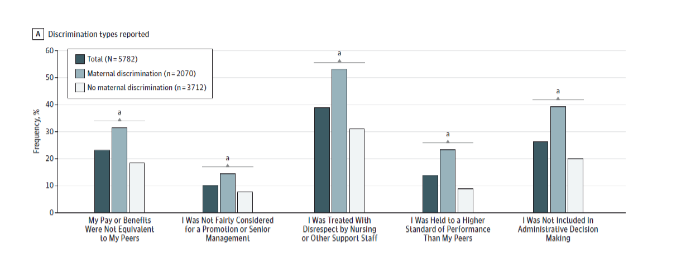The majority of women physicians reported some form of discrimination at the workplace, according to a study published in JAMA. As F. Perry Wilson, MD, reports in this 150 Second analysis, the data should be concerning, even accounting for participation bias.
Have you ever experienced discrimination based on your gender? Age? Being an international medical graduate? Sexual orientation? Pregnancy? Breastfeeding? This was a question asked of over 5,000 physician-mothers via a Facebook poll, and written up in JAMA -- and the results should concern all of us.

First, the details. There's a private group on Facebook called the "Physician Moms Group," which has roughly 60,000 members. Full disclosure: my wife is a physician mom and a member of the PMG.
It is a highly active group – with 415 new posts a day on average. Discussion is wide-ranging.
In 2016, a survey was posted that touched on several domains: the perception of discrimination, mechanism of discrimination, burnout, and recommendations for changes.
A total of 5,782 physician-moms took the survey. The authors think this was a response rate of around 17%, but this is nearly impossible to estimate. Facebook's algorithm does not display all posts to all members of the group, but rather based on how "active" an individual is. Clearly, responder bias is at play here – women who felt strongly about the survey question, in either direction, are more likely to answer – but the extent of this bias is hard to gauge.
The results are nevertheless stark: 78% of the respondents reported some discrimination. Two-thirds reported gender discrimination and 36% reported maternal discrimination (which was discrimination due to maternity leave or breastfeeding).
Younger women, those with young children, and those with more children were more likely to report discrimination.
But what form did this discrimination take?

The dark blue bars are the key here. About 22% of women reported that their pay or benefits were not equal to their peers, echoing multiple studies suggesting a gender pay gap in medicine.
Nearly 40% reported that they were treated disrespectfully by nursing or other support staff. This was intriguing to me, as we often consider workplace discrimination a "top-down" phenomenon. This may not always be the case.
Some will no doubt say that this study is just a vocal minority – discrimination is not really a problem. But consider this – the perception of discrimination in this study was strongly associated with physician burnout. Burnout is becoming a crisis in the medical community. So regardless of whether you think discrimination exists, the perception of discrimination still does harm.
How to fix it? Several solutions were put forward. Here's how they performed:

At the top? More flexible scheduling. Higher salary should come as no surprise. Longer maternity leave would certainly move the bar. None of these solutions are non-starters. And quite a few might be cost-effective, if administrators realize that burnt-out physicians leaving the workforce entirely costs a lot more than a few extra vacation days.
F. Perry Wilson, MD, MSCE, is an assistant professor of medicine at the Yale School of Medicine. He is a MedPage Today reviewer, and in addition to his video analyses, he authors a blog, The Methods Man. You can follow @methodsmanmd on Twitter.
